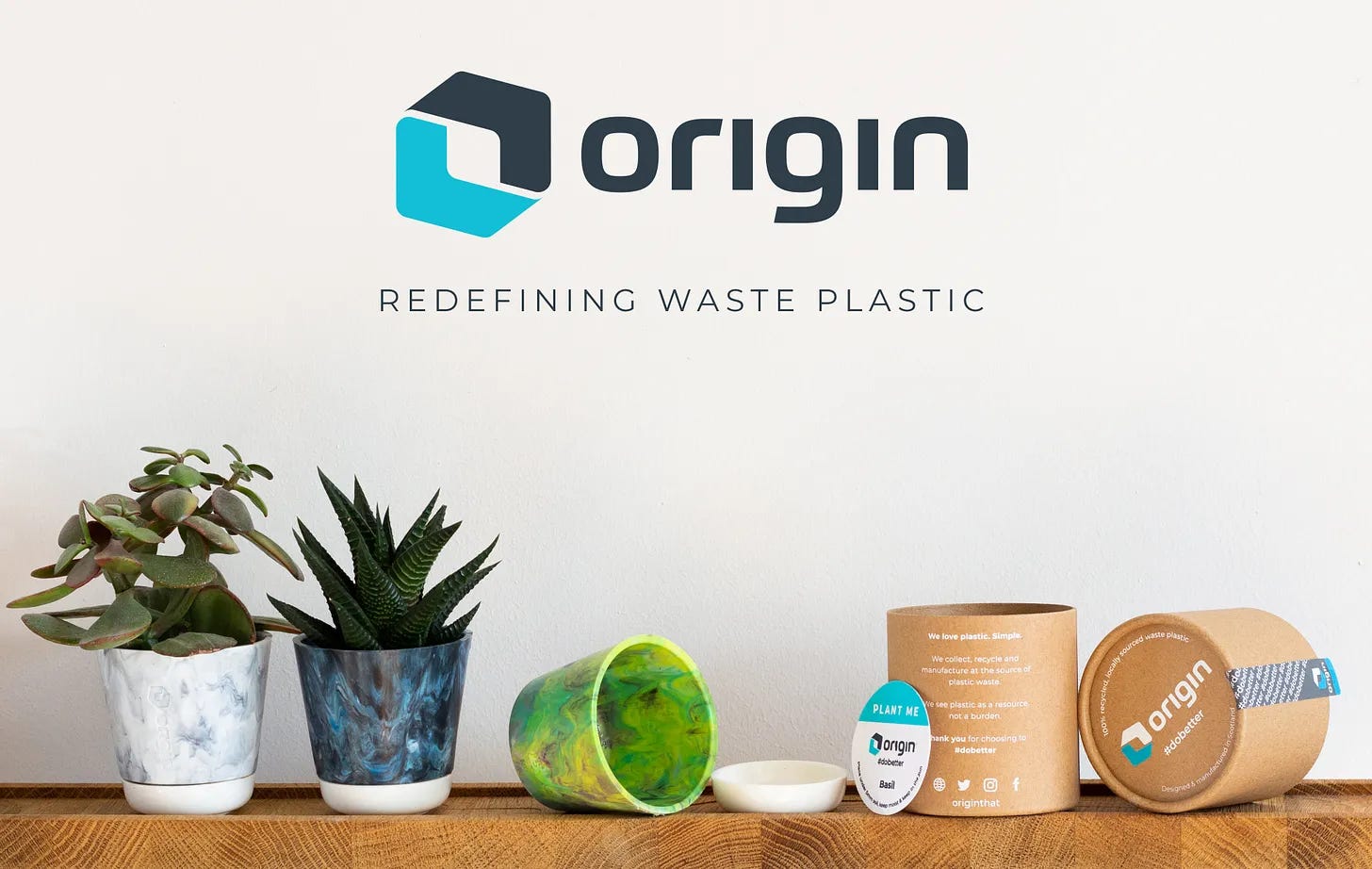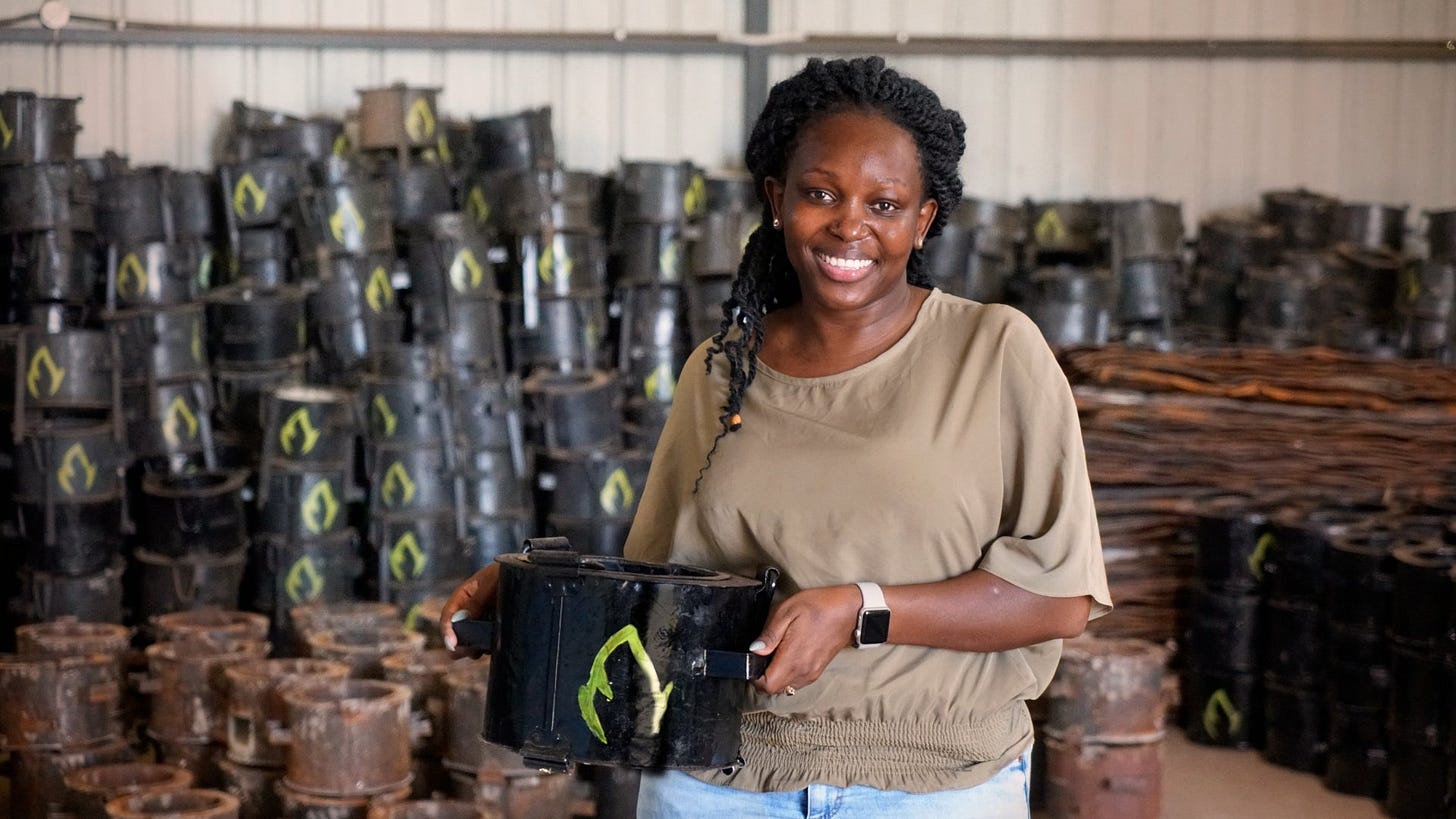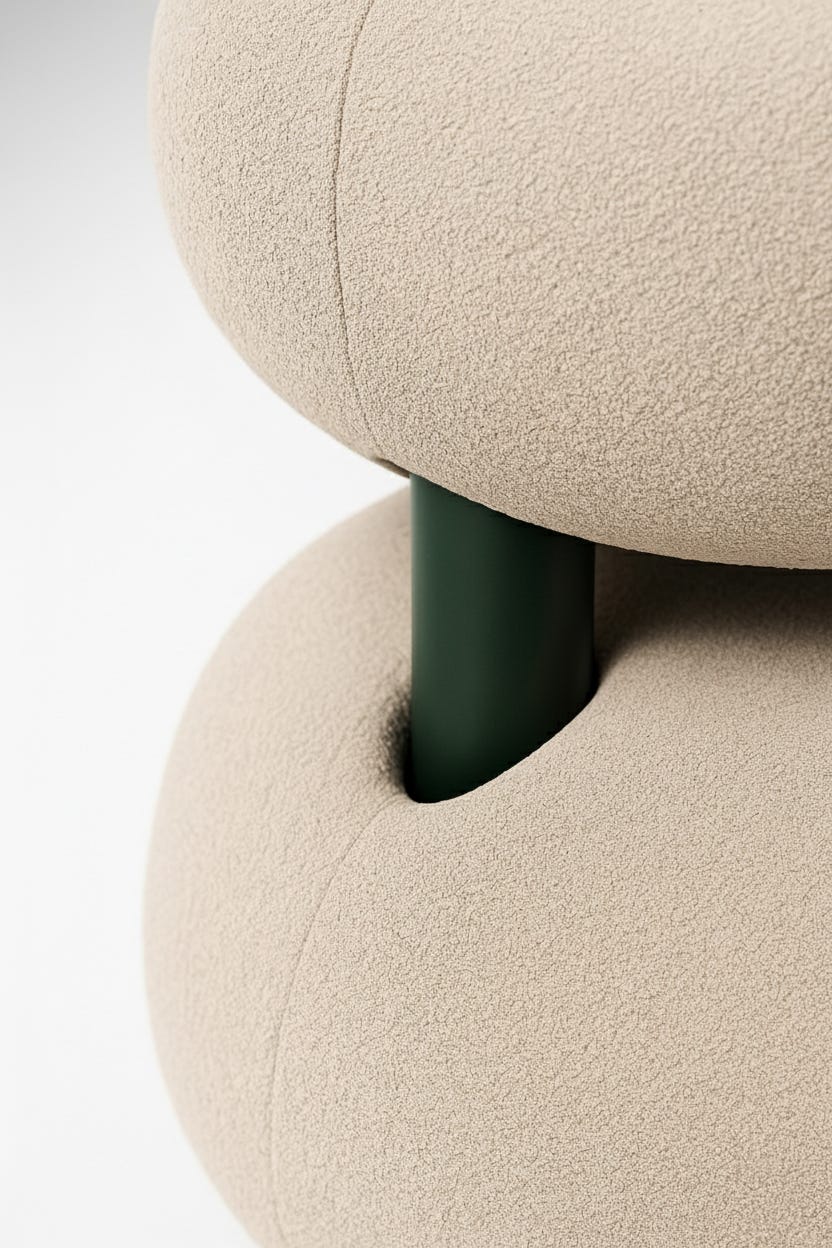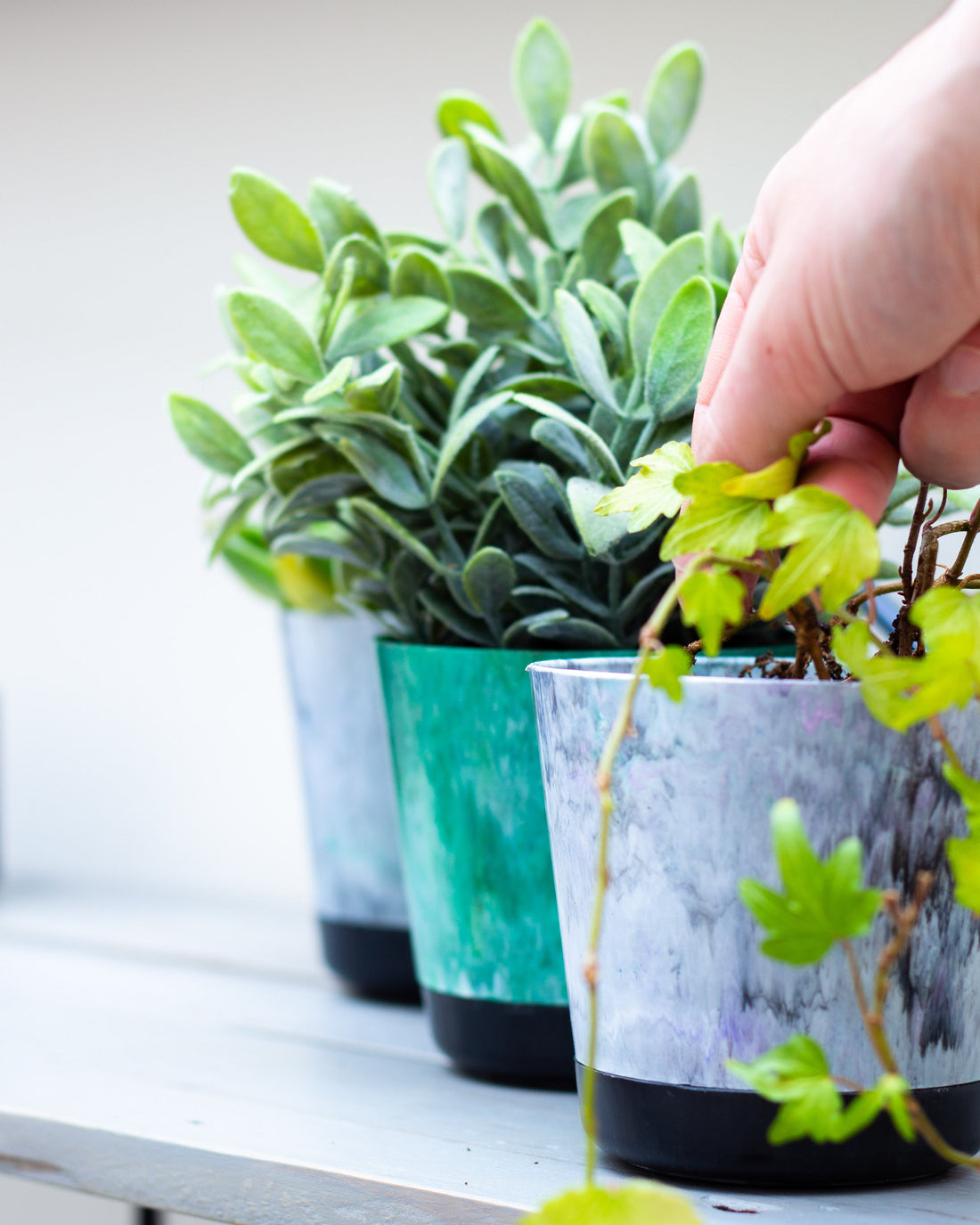
Update 028. A New Hope
Share
I haven’t met a designer who doesn’t care about sustainability.
We’re trained to empathise, think critically and solve problems. Sometimes it weighs us down. Especially young designers. Fear of causing harm can paralyse us. This is the designer’s paradox: the tension between creation and consumption.
A very warm welcome to our new subscribers - it’s so nice to see this small community growing and I hope you find value in this months update.
We have 12 years to save the planet
A bold statement that sent shockwaves around the world at the time - I remember this landing and there being a moment where the world came together with a collective will to put weight behind this problem. This was a moment of action, with commitments being proposed to stay inline with the Paris Climate Agreement in limiting global warming to 1.5C.
I co-founded Origin in 2019 (a plastics recycling startup that placed design and micro-circularity at its core I wrote an update about origin back in Update 019). I felt energised and like I was contributing to the solution.
Fast forward to today and sustainability has slipped off the radar as our consciousness has been consumed by a global pandemic, war, resource scarcity and a cost of living crisis. I have found this particularly challenging personally. It’s not a topic I wanted to write about as I had nothing positive to say at the time. That was until I attended World Design Congressthis month (virtually). A Design summit centred around Design for Planet and I came away inspired again.
This month is about sustainability. A positive update. A new hope.
What Sustainability Really Means
Sustainability is a term that at this point has been so overused, it has lost its meaning. Personally, I align with the UN’s definition:
Meeting the needs of the present without compromising the ability of future generations to meet their own needs
Sustainability is absolutely about the planet. It’s about more than that though, it’s about people, profit and planet - it’s a triple bottom line approach. Neglect one, and you risk failing all three.
Why should designers care about sustainability?
“80% of the environmental impact of products is determined at the design stage”
European Commission 2012
There is a clear opportunity for designers to have a real impact through design and this was why designers have been picking up the mantle to use design as a means to make meaningful change. The challenge? Designers aren’t decision makers. For as much as we may seek to adopt circular design principles and propose more sustainable concepts - our clients are ultimately the decision makers. Whilst there was a large appetite from brands a few years ago to leverage sustainability as a USP (driven by consumer expectations), the last few years have seen a shift backwards - with a lot of brands now pulling their sustainability targets from their website altogether (cough Coca-Cola).
Designers have immense power to shape meaningful change - but there’s a catch. Designers aren’t always decision makers. We can propose circular solutions and sustainable concepts, but our clients ultimately choose. A few years ago, sustainability was a strong USP for brands. Today, some have quietly removed sustainability targets altogether (I see you, Coca-Cola).
But when design meets decision-making, the impact can be transformative.
Mukuru Clean Stoves
A mother’s tragedy sparked innovation. Charlot Magayi’s daughter was burned by a traditional stove in Nairobi. Charlot designed a safer, cleaner stove using processed biomass - 90% less pollution than open fires.
-
Price: $10
-
200,000 stoves sold
-
835,000 lives improved
-
177,000 tonnes of CO2 avoided
-
Hours saved that would have been spent collecting firewood
Impact that scales locally. Real lives changed.
TÅNUM - Impact at scale
When you think of IKEA, your first thought likely isn’t sustainable. How could a company who produce products so cheaply be even somewhat sustainable? it turns out IKEA (through it’s democratic design philosophy) has sustainability front and centre. IKEA invented the flat pack - originally as a means to save costs while transporting furniture. This cost centred approach has led to a highly efficient supply chain - where the form of a watering can has thoughtfully been designed to stack (enabling more units to fit in a shipping container and ultimately paying less to ship more).
One of IKEA’s best examples of a product with impact is TÅNUM. What started as a design student’s idea, quickly became one of IKEA’s best selling rugs. Made from offcuts from IKEA fabric production, and made by a social enterprise in Bangladesh, this rug has reduced waste whilst also empowering skilled craftswomen with financial independence.
Closing Thoughts
Sustainability is complex. It’s easy to feel overwhelmed but design gives us a tool to make a real difference. From local solutions like Mukuru stoves to global scale products like IKEA’s TÅNUM, designers are already proving that thoughtful, human-centred solutions can impact positively on the world.
This month, let’s focus on hope, action, and the real impact design can have.
“We don’t need 100 people doing sustainability perfectly, we need millions doing it imperfectly”
Anne-Marie Bonneau
At Origin, this inspired our mantra: #DoBetter.
Perfection is a trap. If you wait to get it just right, you’ll end up doing nothing at all. Give yourself permission to try, to experiment, to stumble - and keep moving forward. Every small step counts.
I’d love to hear from you: any inspiring sustainability stories or examples of design making a real impact? Drop a comment below and let’s spark some positive energy together!
Is this a topic that interests you? 📚
Here are a few book recommendations:
📘 A Sustainable Design Handbook — By Morrama
📕 The Circular Design Guide — Ellen Macarthur foundation
📙 Sustainable Material Library — an ai powered chatbot connecting to Materiom’s library.
📗 Cradle to Cradle — The first book on sustainability I read, nearly 20 years ago.
📓 Junkyard Planet — Incredible insight into the real world of recycling.
My Products, My philosophy
I find myself more driven than ever to put thoughtful, meaningful products out into the world that don’t compromise on quality. The type of products people want to own and help in some way.
I’ve spent the last few months reflecting quite heavily on what I want to focus my attention on for the next 5 years. Time is tight, family time is important but I am driven more than ever to add thoughtful friction into people’s lives.
I want to design products that intentionally take us out of auto-pilot.
Too often we find ourselves in autopilot, trying to complete the never ending to do list we really don’t stand a chance of ever getting to the bottom of.
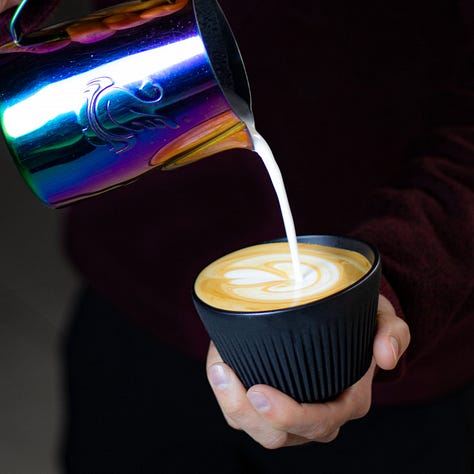
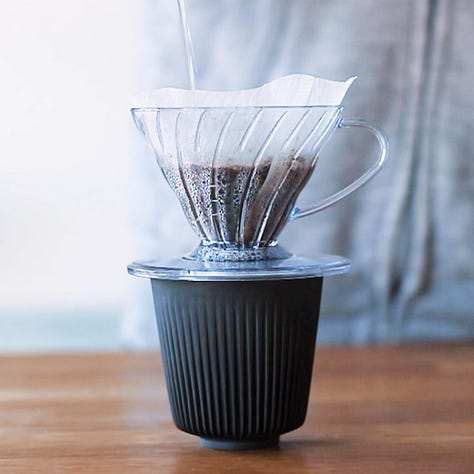
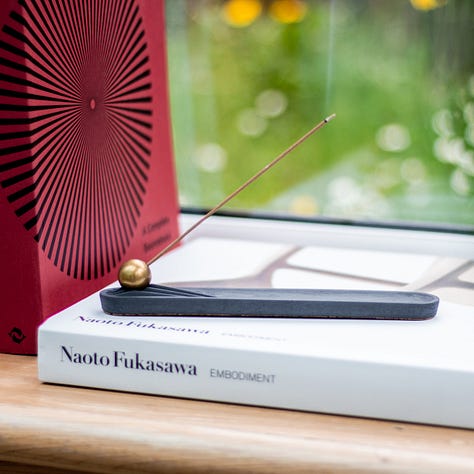
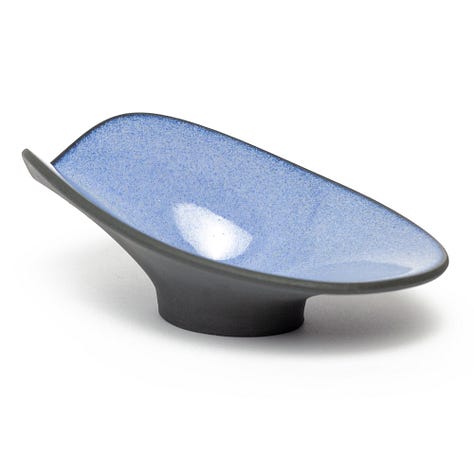

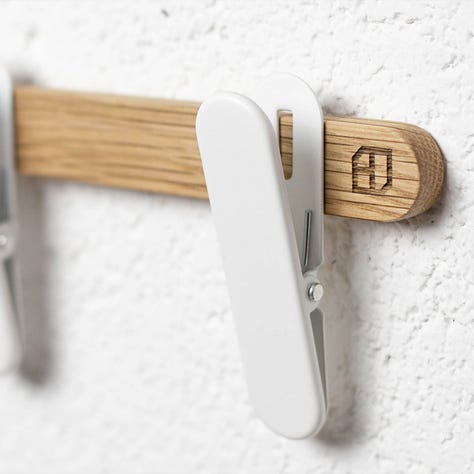
As a thank you, you can use this discount code at checkout (available site wide): SubstackCrew (20% off).
Last months most clicked link: Why Everyone is Quitting Social Media.
My top 5 pieces of content I have found helpful/inspiring:
1.
Why designers abandoned their dreams of changing the world. A brilliantly timed piece by the Financial Times and totally puts into words thoughts I’ve been having over the last few years - although I heavily disagree with the comments around student work.
2.
Benjamin Hubert - The Crit. A brilliant podcast interviewing some of the most impactful designers of today. Great interview with Benjamin from LAYER design. I really connected with his founding story - moving from styling to meaningful experiences. Worth a listen.
3.
Tim Berners-Lee - Leading. Another firm favourite podcast, leading interviews some of the leading voices in society. This month they interviewed Tim Berners-Lee with some interesting reflection on the how the internet has developed.
4.
World Design Congress. Online passes can still be purchased for £5 to review all recorded sessions. Totally worth it and inspiring.
5.
Banff Mountain Film Festival. Really enjoyed attending the Banff Film Festival world tour. I have always enjoyed extreme sport / adventure documentaries so I was sold hook line and sinker here. Absolutely worth checking if the tour is come to you.
AI within Design
One of my favourite things about being a designer is learning new skills. My skillset now vs when I first graduated is entirely different. The tools on my tool belt have grown significantly. Having tested the water with just about every new AI tool I can get my hands on since the early days of AI (check out update 006 from back in Nov 2023), I have been waiting for the day where it would become genuinely helpful within my own workflow. That day is quickly approaching.
My dream use case is to be able to explore design ideas quickly early in an ideation phase. I want to be able to draw a very loose (terrible!) sketch like the below and through a simple sentence transform that into a photorealistic rendering. I have been playing quite a bit with vizcom (still not getting the control I want but it’s getting better) alongside chatgpt’s image generation.
The below is a very quick recent test:
-
5s sketch
-
30s image generation (chatGPT with 3 iterations)
-
2 minute video generation (vizcom image to video using short text description)
Total time spent: 10 minutes.
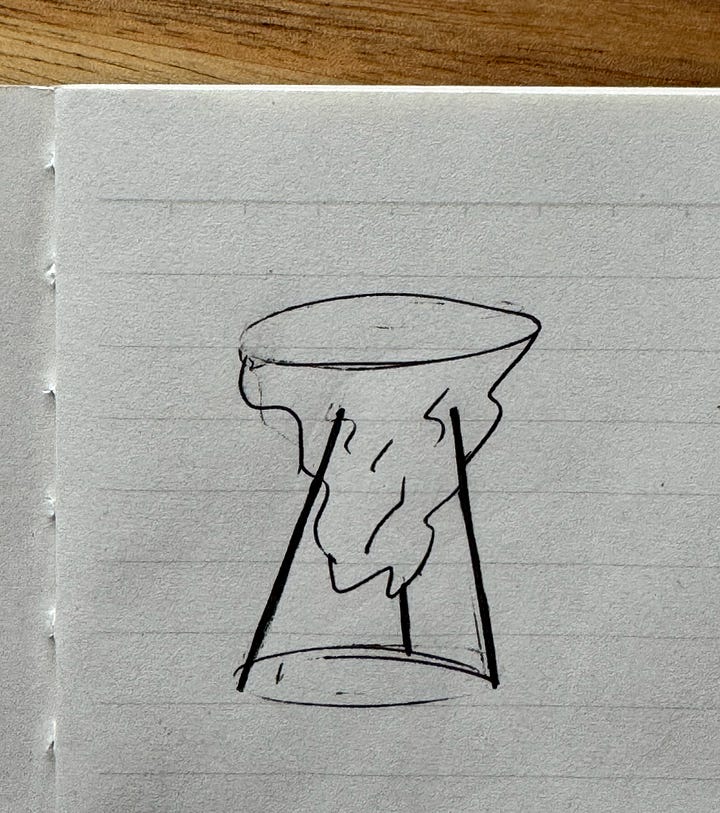
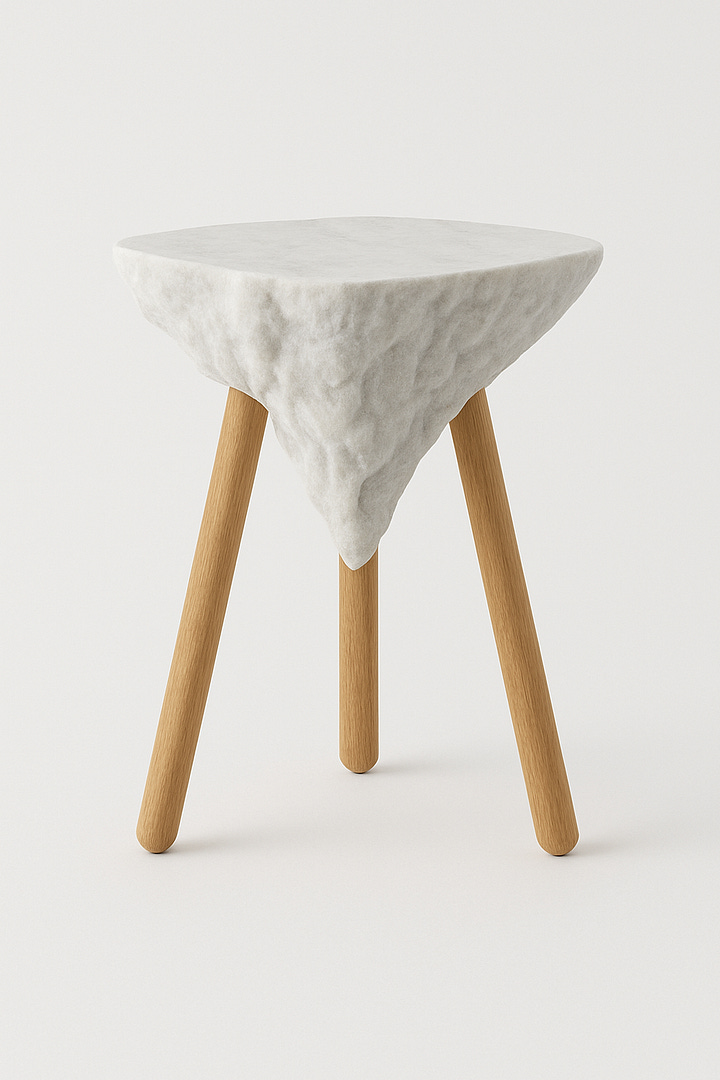
The Details Matter
Another BHS detail of a furniture project I am currently scoping out. It has a playful interaction and deals with small space living. I can’t say much more now, but this detail is really drawing me in. Hope to be able to share more in a few months :)

